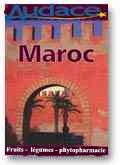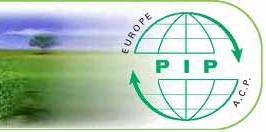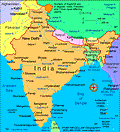co-organiser
Pesticides Manufacturers and Formulators Association of India
NEW DELHI
![]()
September 2003
Is there a future for an independant generic industry ?
Quel avenir pour l'industrie générique indépendante ?
Of the sustainable use of plant protection products
De l'utilisation durable des produits phytopharmaceutiques
co-organiser
Federation of Indian Chambers of Commerce
► 2008
International Crop-Science Conference & Exhibition
Kuala Lumpur - Malaysia
24-25 January 2008
► 2006
INTERNATIONAL CROPSCIENCE CONFERENCE & EXIBITION
Bangkok - Thailand
27-28 July 2006
► 2003
The IVth ASIA PACIFIC CROP PROTECTION CONFERENCE & EXHIBITION
New Delhi - India
18-19 September 2003
En français, consulter la page Maroc :
NAVIGATE :
[cahier juridique - judicial brief]
[forum]
Gandhi
Jeune avocat
Young lawyer
MRL
max residue limit
is the maximum concentration of a pesticide residue (expressed as mg/kg) legally permitted in or on food commodities and animal feeds
MRLs are based on good agricultural practice data, and residues in foods derived from commodities that comply with the respective MRLs are intended to be toxicologically acceptable
MRLs are not in themselves ‘safety limits’,
and exposure to residues in excess of an MRL does not automatically imply a hazard to health
MRLs are intended primarily as a check that GAP is being followed and to assist international trade in produce treated with pesticides
LOD
by the end of 2004,
EU project: 0.01 mg/kg
shall arbitrarily become the norm relevant to food commodity
produced with the help of PPP
with registered use in the country of export
and not listed on annex I of directive 91/414/EC
The Limit of determination (LOD) is the lowest concentration of a pesticide residue or contaminant that can be routinely identified and quantitatively measured in a specified food, agricultural commodity or animal feed with an acceptable degree of certainty by the method of analysis
Maximum Residue Levels set at the LOD are not based on Good Agricultural Practice (GAP)
Simplement Gandhi a fait ce que d'autres auraient pu faire, comme tout un chacun, mais ne l'ont pas fait !
Revision
Existing substances:
-directive
-enter into force
-withdrawal
more than 350 substances have been taken off the EU AgChem market for lack of support from the industry in the review program
400 substances or so will eventually remain at the disposal of eu producers of fresh fruits, vegetables and other crops
What will Indian producers do in the future to guarantee their exports?
[look forward to a PMFAI conference in January 2004 in Delhi]
![]() dir.
91/414/EC
dir.
91/414/EC
04
September 2003![]() (1071KB)
(1071KB)
_
A further 110 substances used in plant protection products (PPPs). are to be withdrawn from the market by December 2003 as part of the European Commission.s new approach to the evaluation of active substances in plant protection products.
These 110 substances are in addition to the 320 that have been withdrawn from the market in July 2003.
Active Substances Covered by the EC Review Program
Updated on 10 October 2003. This table is in line with Commission Document 3010.
The active substances shaded are those that have not been supported or have been withdrawn in Stages 1-3 of the EC Review Program_
The European Commission has taken additional steps to advance the process:
It issued Commission Regulation 2266/2000 which states that any new data will only be considered if requested by the Commission or the Rapporteur Member State and set a final date of submission for any data of 25 May 2002 (25 May 2003 for long term studies).
In addition three further decisions were adopted, Commission Decision of 14 February 2001
Commission Regulation (EC) No 2076/2002 of 20 November 2002 concerning the non-inclusion of certain active substances in Annex I to that Directive and the withdrawal of authorisations for plant protection products containing these substances
Official Journal L 319 , 23/11/2002 P. 0003 - 0011
Commission Regulation (EC) No 2266/2000 of 12 October 2000 amending Regulation (EEC) No 3600/92 laying down the detailed rules for the implementation of the first stage of the programme of work referred to in Article 8(2) of Council Directive 91/414/EEC concerning the placing of plant protection products on the market
Official Journal L 259 , 13/10/2000 P. 0027 - 0028
EXPORT
food commodity
from India to EU
Exporting horticultural products from ACP to Europe is becoming increasingly restricted owing to European regulations and the market's health safety requirements.
The PIP intends to respond to applications from private companies in the ACP fresh fruit and vegetable export trade to the European Union.
They are confronted with strengthening of European buyers' requirements in terms of health quality (pesticide residues) and traceability.
PIP info
roland.levy@coleacp.org
Organophosphates in grapes from India
The Pesticides Safety Directorate (PSD), has announced that two out of four samples of grapes from India contained pesticide residues that exceeded the MRL. The first sample contained residues of methomyl at 0.07 mg/kg (LOD MRL 0.05 mg/kg). The second sample contained acephate at 0.04 mg/kg (LOD MRL 0.02 mg/kg) and methomyl at 0.07 mg/kg (LOD MRL 0.05 mg/kg). (Note: MRL –Maximum Residue Limit , LOD – Limit of Detection)
David
Byrne, European Commissioner for Health and
Consumer Protection, "Food safety and third countries",![]()
Informal Agriculture Council Taormina, 22 September 2003
CCFFV – Codex Committee on Fresh Fruit and Vegetables
TIMES of INDIA
The major non-tariff trade barrier that seriously affects Indian export of spices is the presence of pesticide residues, expressed as Maximum Residue Limits (MRLs).
USFDA has prescribed MRLs for several spices. The EU is yet to finalise the MRLs for pesticides in spices and spice products
CAIRO TIMES
"Some
Egyptian farms, like El-Maghraby, rely on organic fertilizers and
pesticides, but the vast majority are protecting their crops with cheaper,
generic pesticides that will soon no
longer be allowed in Europe, making exporting difficult"
click >
AUDACE's PRESENTATIONS
1

Is there a future for an independant generic industry ?
[Power Point presentation in English]
download could take some time
Quel avenir pour l'industrie générique indépendante ?
[Presentation Power Point en Français]
tranférer peut requérir un certain temps

![]()
2

Of the sustainable use of plant protection products
[Power Point presentation in English]
download could take some time
De l'utilisation durable des produits phytopharmaceutiques
[Presentation Power Point en Français]
tranférer peut requérir un certain temps

Contribution d'AUDACE à la « Stratégie Thématique concernant l'Utilisation Durable des Pesticides ». [ .pdf - 479 KB ]
AUDACE's contribution towards a Thematic Strategy on the Sustainable Use of Pesticides. [ .pdf - 509 KB ]
Вклад АДФП в тематическую стратегию об устойчивом использовании пестицидов [ .pdf - 575 KB ]
![]()
SUMMARY OF STATEMENT ON EUROPEAN RULES FOR REGISTERING GENERIC SUBSTANCES AND
JUDICIAL PENALTIES FOR INFRINGING THE RULES
Whether generic products need to be registered depends on whether the substances they contain are listed in Annex 1 to Directive 91/414/EEC.
Hence there follow six possible scenarios.
European regulations act as a kind of 'super patent' protecting the major manufacturers from competition from generics.
As AUDACE sees it, article 13 of Directive 91/414/CE on data protection should be revoked, or at least amended as part of the current overhaul of the Directive.
Legal sanctions are a sovereign matter for the Member States (MS) of the European Union (EU), and vary from one body of national legislation to another. In France, anyone acting contrary to plant protection regulations is liable to fines and terms of imprisonment.
The industry as a whole, consisting of the producers, national distributors and agricultural users, must reach a consensus policy to regain the confidence of international public opinion.
RESUME DE L'EXPOSE SUR LE STATUT DE L'HOMOLOGATION EUROPEENNE DES SUBSTANCES GENERIQUES ET
LES SANCTIONS JUDICIAIRES EN CAS D'INFRACTIONS A LA REGLEMENTATION
L'homologation des produits génériques dépend de l'inscription ou non des substances qu'ils contiennent à l'annexe 1 de la directive 91/414/CE.
Six situations résultent de cette dépendance.
La réglementation européenne intervient comme un "super brevet" protégeant les fabricants majeurs de la concurrence des génériques.
Du point de vue d'AUDACE, l'article 13 de la directive 91/414/CE sur la protection des données doit être retiré ou, à tout le moins, modifié dans le cadre du programme de révision de la directive.
Les sanctions judiciaires ressortent de la souveraineté des Etats membres (EM) de l'UE et sont variables selon les lois nationales. En France les infractions à la réglementation phytosanitaire sont passibles de sanctions pécuniaires et de peines de d’emprisonnement.
L’ensemble de la filière constituée des fabricants, des distributeurs nationaux et des utilisateurs agriculteurs doit encadrer son activité dans une logique consensuelle pour retrouver la confiance de l’opinion publique internationale.

_
_
Sponsors
"Asia pacific crop protection conference" 18-19th September
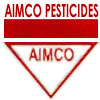
Aimco Pesticides Ltd.,
Mumbai, India.
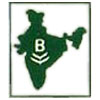
Bharat Rasayam Ltd.,
New Delhi, India

Excel Industries Ltd.,
Mumbai, India.

Gharda Chemicals Ltd.
Mumbai, India.

Gujarat Superphosphate Industries (P.) Ltd., Ahmedabad,
India
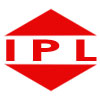
India Pesticides Ltd.,
Lucknow, India.

Meghmani Organics Ltd.,
Ahmedabad, India.

Sulphur Mills Ltd., Mumbai, India.

Rallis India Ltd., Mumbai, India.

Biostadt Agrisciences,
A Division of Wockhardt Ltd.,
Mumbai, India.
CO-SPONSORS
![]()
Indian Institute of Chemical technology (IICT),
Hyderabad, India.
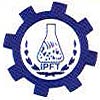
Institute of Pesticide
Formulation Technology (IPFT),
Gurgaon, India.

Marathwada Agriculture University,
Parbhani, India.

Tamil Nadu Agriculture University,
Coimbatore, India.
![]()
The Energy Resource Institute,
New Delhi, India.
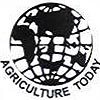
Agriculture Today,
New Delhi, India.

Agrolook, Mahamaya Publications,
New Delhi, India.
![]()
Chemical World Publications, Mumbai,
India
![]()
Farm Chemicals International, USA.
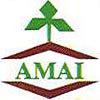
Agrochemicals Manufacturers Association of India (AMAI),
Gujarat, India


